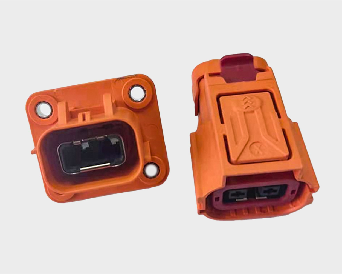Introduction to knowledge related to wire connectors
Due to the increasing number of electronic control devices in modern cars, the number of connecting wires is inevitably increasing. In order to ensure the correctness and reliability of wire connections, wire connectors play a very important role.
Wire connectors are sockets connected to the wiring harness, and all sensing terminals use dedicated interfaces. The connection between the control computer ECU and all external components is made through connectors on the ECU, and signal transmission in the wiring harness is also done through wire connectors. It can be said that in electronic controlled cars, the control computer ECU is the control center, and the wiring harness is the neural network of the control system. Therefore, wire connectors are relay stations for circuit harnesses. However, in addition to convenient installation and accurate wiring, connectors often encounter malfunctions during use. The most common fault is poor contact, which leads to interruption of "network" signal transmission, directly affecting the normal performance of electronically controlled vehicles.

Wire and connector open circuit
Open circuit faults in wires and connectors may be caused by wire breakage, poor connector contact, and loose connector terminals during use.
Due to the rare occurrence of wire breakage in the middle, most of which occurs at the connector, it is important to carefully check whether the wires of the sensor and connection points are loose and have poor contact.
The open circuit fault of a connector caused by poor contact is usually caused by corrosion at the end of the connector and external dirt entering the terminal or connecting socket, resulting in a decrease in contact pressure. At this point, simply remove the connector and reinstall it to change its connection status and restore normal contact.
Short circuit faults in wires and connectors
The faults of wires and connectors may also be caused by short circuits between the wiring harness and the vehicle body (ground wire) or within related switches. Before inspection, it is necessary to first check whether the wiring harness connectors on the vehicle body are securely fixed, and then follow the following steps for testing.
(1) Check if the wires are connected or disconnected
Firstly, remove the wire connectors on both sides of the control computer ECU and sensor, and then measure the resistance between the corresponding terminals of the connectors. If the resistance value is not greater than 1 ohm, it indicates that the wire is normal for the next inspection. When measuring the resistance of a wire, it is best to gently shake the wire in both vertical and horizontal directions to improve measurement accuracy. Meanwhile, it should be noted that for most wire connectors and multimeter probes, they should be inserted from the back of the connector. However, for waterproof connecting rods with waterproof sleeves, they cannot be inserted from the rear end, as careless insertion can cause terminal deformation.
(2) Check the resistance value of the short circuit
Firstly, remove the wire connectors on both sides of the control computer ECU and sensor, and then measure the resistance value between each terminal of the connectors on both sides and the vehicle body. When measuring, one end of the instrument rod should be grounded to the vehicle body, and the other end should be measured separately at the wire joints on both sides. If the resistance value is greater than 1 ohm, it indicates that there is no short circuit fault between the wire and the vehicle body.
Inspection of connector appearance and contact pressure
Firstly, each wire connector should be removed one by one and the connector terminals should be checked for rust and dirt. Rust and dirt should be removed. Then check if the terminal block is loose or damaged, and if the terminals are securely fixed. When gently pulled, the terminals should not be loose. On the contrary, if the plug terminals in one socket are easier to pull out than other sockets, the socket may cause poor contact during use.
Precautions during the inspection process
(1) The inspection of the connector must be carried out with the ignition lock turned off, otherwise it may burn out the relevant components due to self perception.
(2) It is important to release the locking spring or press the locking buckle when disassembling the wire connector. Don't pull hard. When reinstalling, the connector should be inserted into the bottom and locked.






